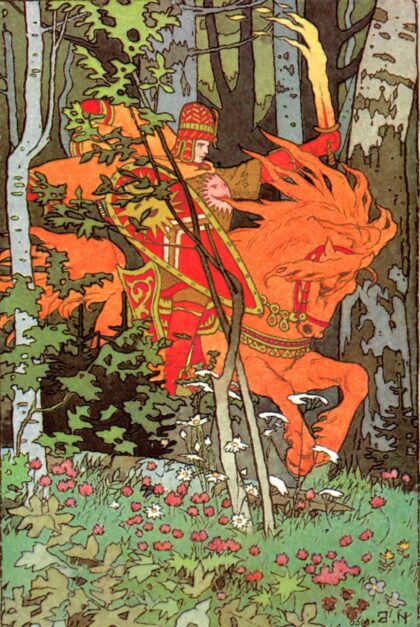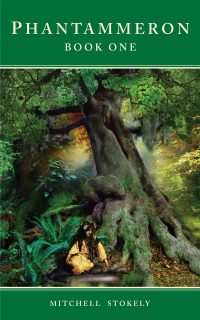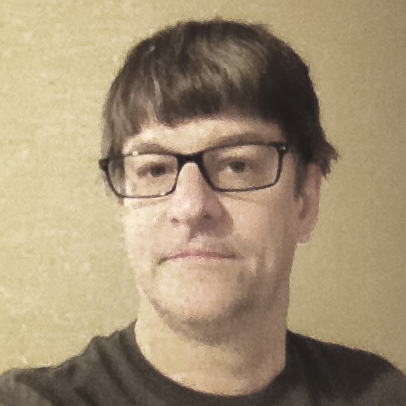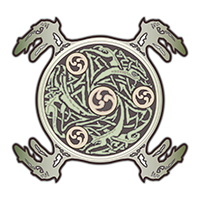As writers and explorers of myth, we should realize that most of what’s been written today originated from much earlier concepts. I’ve been fascinated by the origins of what I call the Indo-European heroic prototype, or ‘hero-journey’ figure.
It turns out most of what we have conceived in fantasy and fiction today came from mythological figures that were constructed from our Western ancestor’s views of the Cycle of the Sun and it’s yearly birth and death in the Northern Hemisphere. (You can listen to my detailed research on the Hero and the Earth Mother in Western Civilization on YouTube below).
As we re-imagine our stories in movies and books it is important young people go back and revisit these earlier stories of heroes and their exploits and understand the meaning and symbols behind them. Without that knowledge, you are are blindly copying pieces of ideas subconsciously into your Modern fiction and repeating tropes without knowing their true meaning or the cultures that created them.
The Four (4) Main Western Heroic Prototypes are:
- Cú Chulainn of the Ulsters (early Irish – Gaelic) – Sun figure/Lugh/redeemer
- Arthur of the Silures (Welsh – Celtic) – Winter figure/Raven/underworld
- Sigfreid of the Danes (early Saxon – Norse) – Sun figure/redeemer
- Beowulf of the Geats (Angles-Saxon – English) – Sun figure/redeemer
As writers you should be familiar with these figures in History as they represent characteristics of the the “Sun Hero” in his many forms in Western Civilization. In most cases the Sun-Hero prototype is dominant in culture and story. The reason for this is simple: Western Civilization has adopted the dominant Patriarchal persona of the Sun-God or Christ-like paternal power in story. In one case, however, the anti-Hero is exhibited. He is the “Dark Lord” associated with winter and of darkness that occurs after Halloween when the sun departs the sly and half the year descends into darkness.
These two Summer/Winter figures together form the stereotypical tragic, seasonal hero-journey “twins” that are repeated over and over in all our ancient Western European cultures, as well as most Western movies and books today. You’ll known them by their many Gemini forms: Castor and Pollux, Romulus and Remus, etc. Even the Rig Veda, which is thousands of years old, has these dueling twin figures. These represent the two halves of the year, good versus evil in story, and the light and dark halves of Western thought and its conflicted and competitive Euro-centric culture that predominates all others.
You will in time notice that America is very much a Patriarchal Society because of the Sun Hero’s dominance. Our laws, our society, or religions, and even our marriage bonds comes from Germanic, patriarchal ideas, not matriarchal. This comes from the Germanic tribes that continually invaded Europe the last 2000 years and their influence over Modern Culture and Religion since then. But underneath you’ll see the dark hero or anti-hero also arise in Modern film and story. His presence reminds us of the hidden, much darker ideal of the Earth Mother culture and the secret Matriarchal Origins of her ancient mythology embedded in all Western Culture. Her symbols also crop up in story and in Modern Holidays, though we deny it. But these four heroic types form the primary basis for story-telling today.

These four major heroic prototypes have been reinterpreted for thousands and thousands of years across Europe and parts of Eurasia. They represent reflections of the changing of the Northern Hemisphere’s cyclical Summer/Winter sun pattern, and are still deeply rooted in our culture and in our celebrations of Halloween, May Day, and Christmas/Winter Solstice celebrations. They even permeate our entertainment, books, religions, institutions, legal systems, and relationships.
These four heroic types also form the basic inspiration for all of the major blockbuster movies, our operas, our music, and most of the books written today. The sun/underworld twins have appeared in the first Star Wars in 1977, Richard Wagner’s Ring Cycle operas in the 19th century, Tolkien’s Lord of the Rings, Rowling’s Harry Potter, and many others art and works.
Anyone writing heroic story arcs today should be intimately familiar with these archetypes as they form the basic source for many of our story cycles repeated today in some form in Western Entertainment. Knowing these themes, we can then enrich them and add their myths into our books and movies to stir audiences and inspire generations to come.
For story arcs come from Greek origins. And in them are continually represented the same Hero-Journey tale that Western writers cannot escape. I would bet 95% or more of all fiction books written contain elements of the European Hero-Journey structure. Any fictional tale that follows a story arc with a resolution of one or more characters follows one of these 4 heroic types.
For any tale that resolves to the reader at the end is a capitulation of the heroic end of the Western Mind inside itself that must be retold for our spiritual culture to feel connected. We write these structured stories over and over again so we feel connected to the cosmological movement of the cycle of the birth, death, and resurrection of the sun in our subconscious and shared cultural minds.
We must do so to belong to the western culture that still dominates America, just as our ancient European Ancestors everywhere experienced the unchanging and permanent cycle of the sun in the Northern Hemisphere over thousands and thousands of years. And so their myths – the myths we inherited in story – were designed to repeat and reflect that seminal event in their minds.
— the Author
Created Feb 24, 2019, 2:09 PM



